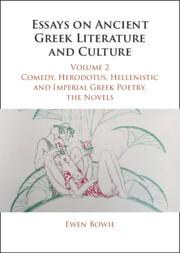This paper reconstructs the history and meaning of a hitherto unexplained astronomical allusion recurring several times in Roman epithalamic poetry: the association of the evening star with Mount Oeta. By examining the iterations of this motif in surviving Latin literature (especially Catullus 62, Vergil's Eclogue 8 and the pseudo-Vergilian Ciris), I propose to explain the original meaning of this association as a mythological reference to the wedding of Peleus and Thetis, offering a reconstruction of the Hellenistic epithalamic context where it was probably invented, and an interpretation of its function in each of the poems under consideration. The results of this analysis shed new light on some of the most well-known texts of Latin literature, allowing us to understand how this allusion was used to explore the relations between the genres of epithalamic poetry, bucolic and epyllion.

